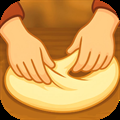
Introduction
The Monk is a unique and versatile Champion card in Clash Royale, unlocked once players progress to Silent Sanctuary (Arena 18). With a deployment cost of 5 Elixir, the Monk brings a powerful presence to the battlefield, but its full potential is realized when players take advantage of its special ability, which costs an additional 1 Elixir to activate. The Monk stands out not only for its offensive capabilities but also for its strategic depth, making it a key card for both offensive and defensive playstyles in Clash Royale Monk strategies.
This guide aims to provide a complete understanding of the Monk’s mechanics, including a detailed breakdown of its stats, abilities, and role in various strategies. We will examine its strengths, such as its ability to deal significant damage while also offering defensive utility, as well as its weaknesses, which require careful consideration when placing it in your deck. The Monk’s special ability can be game-changing, but knowing when and how to activate it is critical to maximizing its effectiveness.
Additionally, the guide will cover proven strategies for incorporating the Monk into your deck, exploring synergies with other cards and offering tips on how to make the most out of its abilities. For those looking to defend against a Monk, we will also highlight effective counterstrategies that can mitigate its impact and neutralize its strengths. Drawing on expert analysis and community feedback, this guide will equip you with the knowledge you need to either make the Monk a formidable force on your side or defend against it with confidence. Whether you’re a seasoned player or just unlocking the Monk, this guide will ensure you are well-prepared to use or counter this powerful Champion card effectively.
Monk Overview
The Monk in Clash Royale has a distinct appearance, resembling the Hog Rider but with a few key differences. He features a tan complexion, a white mohawk, a long mustache, a beard, and eyebrows. He also wears a mala, a cincture, and a red kilt, adding to his unique aesthetic.
As a single-target, ground-targeting, melee troop, the Monk brings a solid balance of durability and offensive power. He boasts high hitpoints (2000), making him a resilient presence on the battlefield, while his moderate damage (140) allows him to engage effectively with enemy troops.
One of the Monk’s defining characteristics is his 3-hit combo. The first two attacks deal regular damage, but the third strike delivers extra damage (420) and has a knockback effect. This knockback is particularly notable because it can affect ground units that are typically immune to knockback, making it a valuable tool for disrupting enemy troops.
As a Champion card, the Monk operates differently from standard cards in that he does not cycle through your deck. Instead, once deployed, he stays on the battlefield until he is defeated, only returning to your card cycle after being knocked out. This makes him a powerful, but strategic, card that requires careful consideration for placement and timing.
Monk’s Ability: Pensive Protection
The Monk’s special ability, Pensive Protection, can be activated during battle by tapping the ability icon located on the right side of the screen. It costs 1 Elixir to use and takes 1 second to activate after being triggered.
While Pensive Protection is active, the Monk gains several powerful properties. He reduces all incoming damage by 80%, making him significantly more durable during combat. Additionally, the Monk will reflect all incoming projectile-based ranged attacks back at the attacker, adding a defensive layer that can turn enemy shots against them. However, spells are always reflected toward the nearest opposing Crown Tower, ensuring that they don’t hit the Monk directly.
For melee and non-projectile ranged attacks, as well as spells, the Monk’s damage reduction remains at 80%, but these effects will not protect nearby troops or buildings. Furthermore, the Monk becomes impervious to all forms of knockback and the Tornado’s pull, making him resilient to crowd control effects that would normally disrupt other troops.
After the ability’s effects wear off, Pensive Protection enters a 17-second cooldown, preventing its immediate reuse. This ability gives the Monk a powerful defensive tool, but it requires careful timing and positioning to maximize its effectiveness on the battlefield.
Strategies for Using Monk
Offensive Use:
The Monk can be a powerful offensive card when used strategically. Placing the Monk in front of a Royal Giant allows it to act as a tank, soaking up damage while also reflecting projectiles from ranged troops, giving your Royal Giant a clear path to the enemy Crown Tower. Pairing the Monk with a Ram Rider and Sparky creates a formidable combination, as the Monk tanks for the Ram Rider and protects Sparky from knockback effects that could otherwise disrupt its charge.
The Monk can also fit well in Three Musketeers decks, helping to protect your high-damage troops while reflecting enemy projectiles. Additionally, the Monk’s special ability can be used to break through an opponent’s primary defense, allowing you to target their damage-dealing troops. To ensure the Monk has enough health to activate his super effectively, consider pairing him with a defensive troop like the Knight to help him build up the ability without taking too much damage. Using a Fisherman to pull enemy tanks towards the Monk can set up a powerful attack, allowing the Monk to quickly deal with any large threats that are pulled toward him.
Defensive Use:
On defense, the Monk excels against projectile-based units but is less effective against melee units. His ability can reflect incoming projectiles, making him a strong counter to enemy troops relying on ranged attacks. You can use a Fisherman to pull enemy tanks away from your Royal Giant, ensuring that your Royal Giant connects with the tower while the Monk handles any ranged threats. The Monk is also effective for defending against enemy pushes, especially when facing troops that rely on spells or ranged attacks. He can be positioned to pull the Royal Giant, redirecting its attacks and causing it to damage itself.
Additionally, the Monk’s ability can reflect arrows from Crown Towers, although the reflected damage is reduced to 25%. This can be a useful tactic when used alongside other troops that can deal damage to the Crown Tower. The Monk can also reflect projectiles from enemy troops, causing units like the Magic Archer to damage their own tower, or even forcing an Executioner to take significant damage from its own reflected axe.
Deck Composition:
When building a deck around the Monk, it’s essential to include a variety of support units to maximize its effectiveness. Good minis to pair with the Monk include Fisherman, Knight, Golden Giant, Battle Healer, Spear Goblin, and Dart Goblin. These cards can support the Monk in different ways, from providing extra protection to dealing damage from a distance.
In terms of spells, cards like Fireball, The Log, and Electro Spirit can help control the battlefield while complementing the Monk’s abilities. Giant Evolution and Skeleton Evolution are solid choices for a tank or distraction, while Phoenix offers great air defense. Fisherman can also be used to control enemy movements, while The Log provides crowd control and helps eliminate swarms of enemy troops.
Mastering elixir management is crucial when using the Monk, so cycling through low-cost cards like Skeleton Evolution and Electro Spirit will help keep pressure on your opponent while ensuring you have enough Elixir to activate the Monk’s powerful ability. By maintaining relentless pressure, utilizing counter-push opportunities, and protecting the Monk with spells and support units, you can effectively control the pace of the game and capitalize on the Monk’s potential.
How to Counter Monk
To counter the Monk effectively, place troops whose attacks cannot be deflected by the Monk’s ability. Cards such as Tesla, Inferno Tower, Inferno Dragon, Electro Wizard, Zappies, and Electro Giant can be effective, as the Monk cannot reflect their damage. Additionally, the Inferno Dragon and Inferno Tower continue to ramp up their damage against the Monk even when his ability is active, making them reliable counters. Swarm units, such as Skeletons, Goblins, or Bats, can also overwhelm the Monk due to his single-target damage and slower hit speed.
Melee troops like Mini P.E.K.K.A., P.E.K.K.A., Knight, Prince, Lumberjack, Night Witch, and Elite Barbarians can deal substantial damage to the Monk, especially when placed in a way that minimizes the effect of his knockback. Be mindful of ranged troops, as the Monk can quickly target them if they’re placed within his range. Lastly, Bridge blocking can be a disruptive tactic, preventing the Monk from moving forward and dealing damage.
Spells that cannot be reflected by the Monk are effective counters, including Poison, Lightning, Freeze, Royal Delivery, and Zap. These spells can help you control the Monk while avoiding the risk of having your spell reflected back at you. Baiting out the Monk’s ability by using spells at the right time can also open up opportunities for dealing with him more effectively.
Timing is crucial when dealing with the Monk. Avoid casting spells directly at the Monk, as his ability will reflect them back at you. Instead, try casting spells elsewhere to avoid reflection and still apply pressure. Wait for the Monk to activate his ability before deploying projectile-based troops to avoid having them reflected. Applying pressure in the opposite lane can force the Monk player to focus on defense, allowing you to weaken their attack.
Most players will activate the Monk’s ability after crossing the bridge, so preventing him from crossing can make him easier to eliminate. A Monk without his ability is much more vulnerable. When using melee attacks, be sure to time them carefully to avoid the Monk’s knockback effect.
Air units like the Phoenix and Inferno Dragon are effective counters to the Monk, as they can deal continuous damage from the air without being affected by his knockback. Mini P.E.K.K.A., P.E.K.K.A., and Prince are great at dealing heavy damage to the Monk in melee range, especially when timed properly. The Hunter, when positioned at point-blank range, can deal enough damage to immediately kill the Monk as his ability will reflect the Hunter’s powerful shot back, dealing massive damage. Ice Wizard can also be effective, as its slow attack will hinder the Monk’s movement and attack speed, allowing you to gain an advantage in controlling the battlefield.
When facing a Monk, save versatile cards like the Knight for direct counters. Be aggressive to keep the Monk player on the defensive, and consider baiting their ability early on by placing troops or spells that force them to use it prematurely. Using cards like The Log, Magic Archer, or Firecracker can help activate the King’s Tower if the Monk is near the center of the arena, giving you a defensive advantage. Kiting the Monk away from supporting troops can also disrupt their combo and reduce the Monk’s effectiveness. If the Monk is used defensively, try to make them waste their ability on defense, as a Monk without his ability is much easier to take down.
Applying consistent pressure can force the opponent to use the Monk’s ability on your side of the map, creating openings for further attacks. Be mindful of the Monk’s knockback combo, and try to stun him with abilities from troops like the Electro Wizard or Stun spells to interrupt his ability activation. Since the Monk is most effective with his ability active, forcing him to use it early or preventing its activation can significantly reduce his threat.
Monk Deck Examples
Here’s a Monk deck incorporating Three Musketeers, Elite Barbarians, Lumberjack, Bandit, Heal Spirit, Elixir Collector, and Barbarian Barrel that leverages Monk’s abilities for both offense and defense:
Barbarian Barrel – Useful for clearing swarms and disrupting enemy troops. The Barbarian Barrel provides a reliable form of crowd control and a small amount of chip damage.
Monk – The key card of this deck. Use Monk to tank damage and reflect projectiles while supporting your pushes. His ability to reduce damage and reflect projectiles makes him invaluable in both offensive and defensive situations.
Three Musketeers – A powerful and expensive win condition. Use them in combination with the Monk to push hard while the Monk tanks for them. The Monk’s Pensive Protection ability can help keep them alive longer while they deal massive damage.
Elite Barbarians – A high-damage unit for quick counter-pushes. Use them to punish your opponent for overcommitting or to support your offensive pushes.
Lumberjack – Provides additional offensive pressure with his rage effect, and also helps to clear enemy tanks and supports. He can synergize well with the Monk to deliver devastating pushes.
Bandit – Adds mobility and pressure to the deck. The Bandit’s dash can help with dealing with back-end units or applying pressure to the opponent’s tower.
Heal Spirit – A great support card to keep your troops, especially the Three Musketeers or Elite Barbarians, alive longer. Heal Spirit can help sustain your push and recover some health on your Monk as well.
Elixir Collector – The Elixir Collector is used to build a strong elixir advantage, enabling you to deploy expensive cards like Three Musketeers and Elite Barbarians. It helps to generate enough elixir for a powerful push or defense.
This deck blends Monk’s versatility with powerful offensive units to overwhelm opponents, while also having enough defensive capabilities to handle various threats.
Another aggressive combination is the 3M, Monk, eBarbs, Pump deck, which uses the Monk as a tank while the Three Musketeers and Elite Barbarians apply overwhelming pressure. A Party Rocket, Monk, Miner deck focuses on using the Monk to tank and reflect projectiles while providing consistent chip damage with the Miner and powerful spell control with Party Rocket. For a more defensive yet effective setup, the Party Hut, Monk, Hog Rider deck combines the Monk with consistent pressure from the Hog Rider and the extra value provided by the Party Hut.
In a Royal Giant, Monk, Phoenix, Mother Witch deck, the Monk supports the Royal Giant while Phoenix and Mother Witch provide strong utility for controlling the battlefield. The Party Hut, Monk, Mirror setup offers multiple Monk deployments and an opportunity for massive pressure from the Party Hut. A Berserker Evo Lumberjack, Ram Rider, Monk deck creates fast-paced pushes, with the Lumberjack and Ram Rider working together to complement the Monk’s defense capabilities. Monk, Phoenix, Graveyard is a potent deck for controlling the tempo, with the Monk providing a solid defense while Phoenix and Graveyard apply pressure.
For splash damage control, the Splashyard, Monk, Zappies deck can disrupt enemy pushes, combining the Monk’s defensive strength with the slowing and control from Zappies. A 3M, Monk, Miner, Pump bait deck can overwhelm opponents by baiting spells with the Three Musketeers and creating a defensive wall with the Monk. The Phoenix, Monk, Royal Hogs cycle deck creates a balanced offensive cycle, with Monk defending and Phoenix supporting Royal Hogs. Another effective combination is RG, Monk, Phoenix, Fisherman, where the Monk helps protect the Royal Giant while Phoenix and Fisherman add both offense and defense.
For a more control-oriented approach, the Graveyard, Exe, Phoenix, Freeze deck works well with the Monk, controlling the battlefield with powerful spells and consistent chip damage from Graveyard. The Miner, Poison, Monk, Phoenix cycle deck offers constant pressure, using Miner for chip damage while Monk and Phoenix provide solid defense. Similarly, Miner, Balloon, Monk, Phoenix provides a solid counter-push strategy with the Monk tanking for the Balloon. Splashyard, Phoenix, Monk is a versatile deck that combines splash damage with Monk’s protection to secure control.
For a faster cycle, Magical Trio Drill, Monk cycle utilizes a fast-paced cycle with Monk as both a tank and damage dealer, while Spooky Chess, Monk, Recruits, Rage, Firecracker is a surprise deck that can overwhelm opponents with a combination of Monk, Rage, and Firecracker. The Miner, Phoenix, Monk cycle deck applies constant pressure with a quick cycle and solid defense from the Monk and Phoenix. A Monk, Ram Rider, Lumberjack, Fireball deck provides aggressive pushes, while the Monk, Firecracker, Hog Cycle deck focuses on fast chip damage and Monk’s defensive strength.
Other variations like XBow, Monk cycle or Rune Giant Evo, Gob Giant, Monk, Tornado add flexibility with the Monk as a reliable support, while Furnace Gob Hut, Monk, Mother Witch can provide relentless control through resource generation and Monk’s tanking abilities. The Phoenix, Monk, eGolem, Mirror deck offers high-value synergy, while Hog, Monk cycle decks focus on quick tempo with the Monk as a defensive anchor. Finally, the Rocket Rumble, Monk, Bats deck combines the Monk’s ability to absorb damage with precision spell control and strong air defense.
A Monk, Ram Rider, and Sparky deck offers a surprise strategy, with the Monk protecting the Ram Rider, preventing knockback effects that could otherwise disrupt Sparky’s charge. These decks provide a diverse set of strategies, showcasing the Monk’s potential in both offensive and defensive roles, as well as his ability to enhance synergy with other cards.
Conclusion
The Monk is a powerful Champion card unlocked at Arena 18, offering both offensive and defensive capabilities that can make a significant impact in battles. With high hitpoints, moderate damage, and a unique special ability called Pensive Protection, the Monk excels in reducing damage and reflecting projectiles, making him a versatile and resilient force on the battlefield.
To use the Monk effectively, players must focus on strategic troop placement, careful elixir management, and a solid understanding of his strengths and weaknesses. The Monk shines in situations where he can absorb damage and reflect projectiles from ranged troops, but he is less effective against melee units that can bypass his defenses. Understanding how to counter the Monk is also crucial—using troops that cannot be deflected, spells that can’t be reflected, and deploying attacks at the right time can neutralize his power.
A wide variety of Monk deck combinations, such as those featuring Giant Evolution, Royal Giant, Ram Rider, and Three Musketeers, each offer different strategic advantages depending on playstyle. By mastering the Monk’s unique abilities and knowing how to handle his counters, players can unlock his full potential and turn him into a key asset in achieving victory in Clash Royale.













